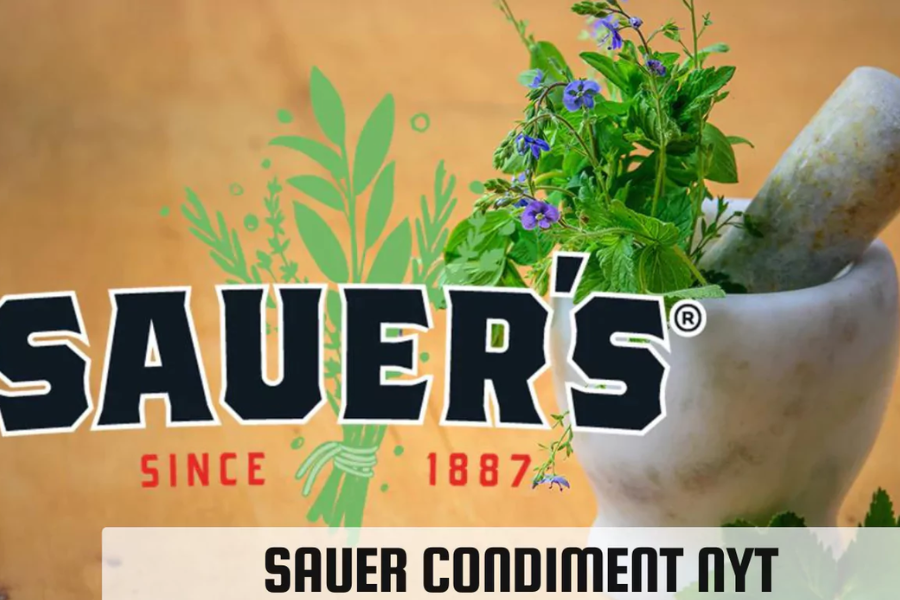Sauer Condiment Nyt | Introduction, Understanding, A Cross-Cultural Phenomenon & More
Introduction
The resurgence of fermented foods like sauerkraut reflects a broader trend toward valuing traditional and artisanal culinary practices. Once considered a staple only in certain cultures, sauerkraut is now celebrated for its tangy flavor and health benefits. This article explores why fermented foods, particularly sauerkraut, are making a strong comeback, examining their nutritional advantages and their role in modern kitchens.
Figuring out Sauer Fixing NYT Crossword Hints
For crossword enthusiasts, recognizing clues related to sauer condiments can be both challenging and rewarding. Sauer condiments, known for their sharp or tangy profiles, include ingredients such as vinegar, mustard, pickles, and sauerkraut. Understanding the history and cultural significance of these condiments not only enriches your crossword experience but also deepens your appreciation for their role in global cuisines.
Historical and Cultural Significance of Sauerkraut
A Worldwide Culinary Star
Sauerkraut’s journey began in ancient China, where fermentation was used to preserve vegetables. German immigrants later brought this technique to America, turning sauerkraut into a cherished part of many households.
A Multifaceted Peculiarity
Fermented foods like sauerkraut, kimchi in Korea, and miso in Japan are celebrated worldwide for their unique flavors and long shelf life. These foods not only offer a taste of history but also bridge cultural divides, reflecting a shared appreciation for preservation and taste.
The Job in Worldwide Cooking styles
From classic Reuben sandwiches in New York to traditional German bratwurst, sauerkraut’s versatility shines through. Its crunchy texture and tangy flavor make it a popular ingredient for enhancing a variety of dishes.
Common Sauer Condiment NYT Crossword Clues
Mustard
Often seen as a “yellow condiment” or “hot dog topper,” mustard is known for its sharp, tangy flavor that complements many dishes.
Vinegar
Clues like “salad dressing ingredient” or “sour liquid” usually point to vinegar. Its versatility and distinct taste make it a frequent entry in crosswords.
Pickles
Described as “brined cucumber” or “sandwich addition,” pickles are favored for their tangy flavor and crunch, making them a common crossword clue.
Sauerkraut
Although less common, sauerkraut appears in clues like “fermented cabbage” or “Reuben sandwich topping.” Its unique flavor and cultural significance make it a noteworthy entry.
Ways to tackle Sauer Fixing NYT Crossword Hints
To excel at solving crossword clues related to sauer condiments:
- Recognize Patterns and Prefixes: Look for familiar terms like “tangy,” “sour,” or “sharp.”
- Know Synonyms and Variations: Be familiar with different names, such as “acetic acid” for vinegar or “gherkins” for pickles.
- Understand Clue Difficulty Levels: Adapt your approach based on the clue’s complexity, from straightforward definitions to more intricate wordplay.
Medical advantages of Devouring Matured Food sources
Supporting Stomach Wellbeing
Sauerkraut is rich in probiotics, which support a healthy gut microbiome, aiding digestion and nutrient absorption.
Resistant Framework Backing
A balanced gut contributes to a stronger immune system. The probiotics in sauerkraut help the body fend off illnesses, leading to better overall health.
Wholesome Force to be reckoned with
Low in calories yet high in vitamins C and K, iron, and fiber, sauerkraut provides significant health benefits, making it a valuable addition to any diet.
Focus on the New York Times Article
Flooding Omnipresence
The New York Times has recently spotlighted sauerkraut’s comeback in contemporary cuisine. Its presence is growing in both high-end restaurants and everyday home cooking.
Present day Gastronomy
Chefs are reimagining sauerkraut in creative ways, from gourmet tacos to innovative fusion dishes. The article showcases these modern culinary applications.
Social Pertinence
Sauerkraut symbolizes a movement toward appreciating traditional, sustainable foods, reflecting a cultural shift back to artisanal and slow food practices.
Interviews with Neighborhood Fermenters and Culinary experts
The Specialty of Aging
Local fermenters discuss their passion for crafting sauerkraut, sharing tips on selecting ingredients and perfecting the fermentation process.
Culinary Imagination
Chefs share how they incorporate sauerkraut into their dishes, such as sauerkraut-stuffed pierogies and deconstructed Reuben salads, highlighting its culinary versatility.
Maturation Studios
Fermentation enthusiasts offer workshops, providing hands-on experience in making sauerkraut and encouraging creative experimentation in the kitchen.
Conclusion
Sauerkraut, along with other fermented foods, is making a remarkable comeback, reflecting a renewed appreciation for traditional culinary practices. Its rich history, health benefits, and versatility have cemented its place in modern cuisine. By exploring the cultural and nutritional significance of these time-honored foods, we gain a greater understanding of their value and continue to enjoy their unique flavors and benefits.
FAQs
What are sauer condiments?
Sauer condiments are tangy or sour-flavored ingredients, including vinegar, mustard, pickles, and sauerkraut, used to enhance various dishes.
Why are fermented foods becoming popular again?
Fermented foods are valued for their health benefits, such as improved gut health and immune support, as well as their rich flavors and versatility.
How can I solve crossword clues related to sauer condiments?
Recognize common patterns and prefixes, learn synonyms and variations, and understand the clue’s difficulty to improve your crossword-solving skills.
What are the health benefits of sauerkraut?
Sauerkraut offers probiotics for gut health, supports immune function, and provides essential nutrients like vitamins C and K, iron, and fiber.
What did the New York Times say about sauerkraut?
The New York Times highlighted sauerkraut’s resurgence in modern cuisine, its innovative use by chefs, and its cultural significance in the context of traditional, sustainable foods.
How do local fermenters and chefs use sauerkraut?
Local fermenters share their methods for making sauerkraut, while chefs use it in creative dishes, showcasing its versatility in contemporary cuisine.
Discover the top headlines and must-know updates from TheMail.blog.






